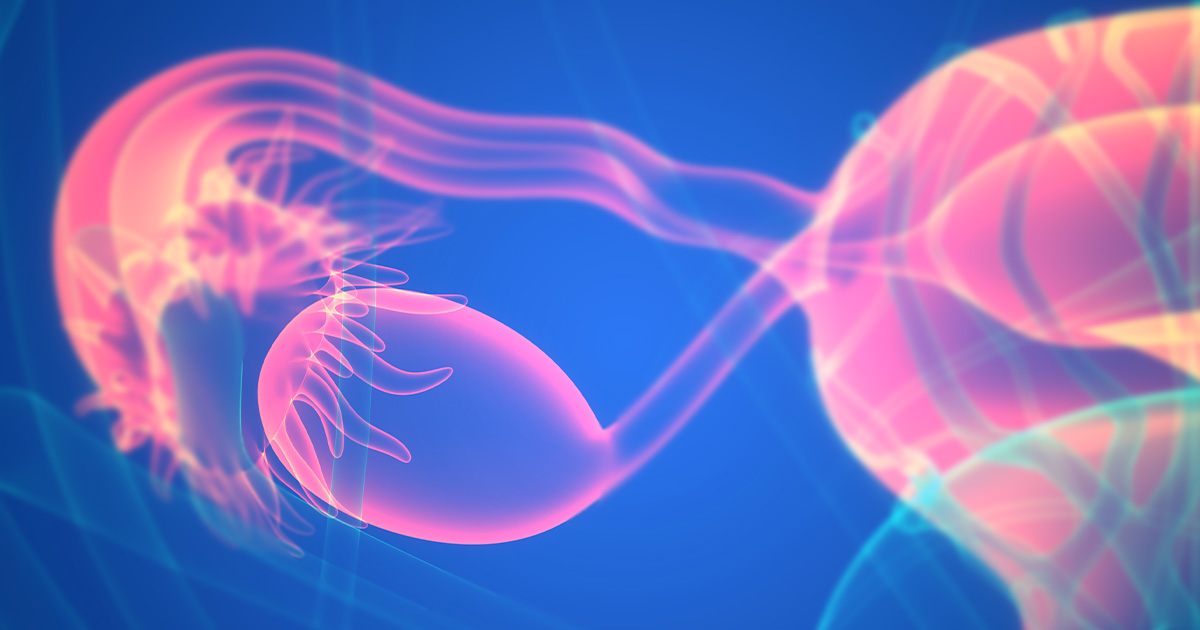In our series, “What’s Up, Down There,” we’re covering important health topics you might not have learned in health class. In this issue, we’re exploring an important part of the female anatomy – the ovaries.
The Basics
Before we dig into some surprising facts, let’s make sure we’re on the same page about what the ovaries are and how they function. The ovaries are two small oval-shaped glands, about the size of a grape, located on either side of the uterus. Some may say they even look like little brains – which is a clever analogy considering the important role they play in a woman’s health.
The ovaries have two main functions – to make and store female sex hormones and release eggs. Our ovaries are constantly in communication with the brain, sending signals back and forth to help produce and regulate the hormones estrogen and progesterone. These hormones impact everything from fertility, to regulating our menstrual cycle, and eventually later in life the transition to menopause.
The ovaries are also where eggs (also known as oocytes) are produced and stored. Eggs are stored within the ovaries in small sacs called ovarian follicles – each contains thousands of follicles. The ovaries take turns releasing an egg each menstrual cycle. If the egg is fertilized by sperm, it begins the process of conception. If it is not fertilized, we shed the egg through our menstrual period.
Now that we’ve got the basics down, let’s get into some important facts you may not know.
Get The Facts
- Women are born with all the eggs we’ll ever have. After birth, our ovaries stop producing new eggs.
Typically, we’re born with about 1-2 million eggs. By the time a girl begins her first period, that count decreases to 300,000-400,000 eggs. It’s estimated that about 1,000 eggs are lost each month. That’s why by the time we reach our early 30s, fertility begins to decrease. It’s not just egg quantity that decreases, but egg quality as well. This is why procedures like egg and embryo freezing have gained significant popularity in recent years, with individuals and couples opting to preserve their fertility and put a pause on the biological clock – saving those eggs/embryos for when they’re ready to build a family down the road. If having a family is one of your goals, scheduling an evaluation with your Axia Women’s Health provider is a great first step. During that evaluation, we can discuss your goals, and if needed refer you to one of our fertility partners for additional support.
- You may be able to feel your ovaries working during the moment of ovulation. This is a unique sensation known as “mittelschmerz”.
Have you ever noticed a sudden twinge in your pelvis on one side that seems to pop up once a month? This could be ovulation pain, also known in medical terms as “mittelschmerz,” meaning middle pain. It may resemble the feeling of menstrual cramps but is often one-sided and linked to the side of the ovary that is releasing the egg that month. This pain is not typically severe and generally subside within 48 hours. Fun fact: some women can predict ovulation based on this pain alone, making it a natural fertility signal. Of course, any kind of recurrent pain during/around your period shouldn’t be ignored and is worth a discussion with your Axia provider.
- Just like us, our ovaries can get stressed out too.
During moments of major stress our ovaries can stop releasing eggs. This is because when under stress, communication between the ovaries and the brain can get interrupted. When cortisol (the stress hormone) increases, it can interfere with the signal between the brain and ovaries and disrupt the typical release of hormones. Some may say it’s nature’s way of preventing pregnancy during stressful times. If you are trying to conceive, finding techniques to help lower stress like physical exercise, connecting with loved ones, or just taking a moment for yourself is so important.
- Ovaries are tied to more than just fertility. They play a major starring role in many aspects of our health.
Because ovaries play a significant role in hormonal balance, they can be directly tied to so many areas of a woman’s health. When working properly, the hormones produced by the ovaries can help maintain bone density, support heart health, stabilize mood, and regulate your menstrual cycle. When the hormonal balance is off, they can lead to things like irregular menstrual cycles, body acne, male pattern hair growth acne. These symptoms can be even more prevalent in women with conditions such as polycystic ovarian syndrome (PCOS). Understanding the root cause is important in treating the symptoms. Your provider can help you explore this and may offer treatments ranging from birth control to other insulin-regulating medications, and/or lifestyle changes.
- Ovarian cysts are common.
Most women will develop an ovarian cyst at some point in her life, typically during reproductive age and around the menstrual cycle. These are known as “functional cysts”. Usually they are harmless, painless, and will go away on their own. While they are usually benign, certain cysts may be particularly large or complex, and may require medical attention. If you experience any of the following symptoms, it’s worth contacting your provider:
- Severe pelvic pain or sudden pain that doesn’t go away
- Pain during sex
- Significant bloating
- Changes in your menstrual cycle
- Unexpected weight loss
What It All Means For You
Your ovaries may be small, but they’re mighty – like tiny command centers working around the clock. They are involved in so many aspects of our health from our menstrual cycle to fertility and more. While we can’t easily see or track the ovaries, the biggest clue of how they’re functioning is changes in our menstrual cycle. It’s important to stay clued into any changes so you can know what’s normal/what’s not and when to call your Axia Women’s Health provider.
Similar Articles
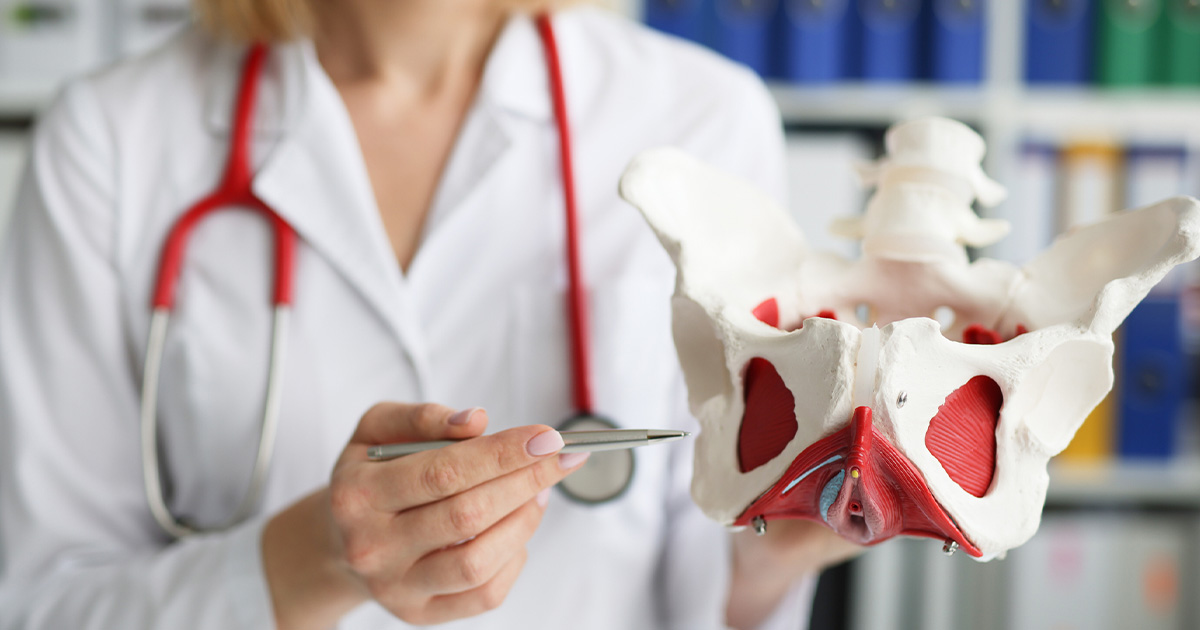
November 10, 2025
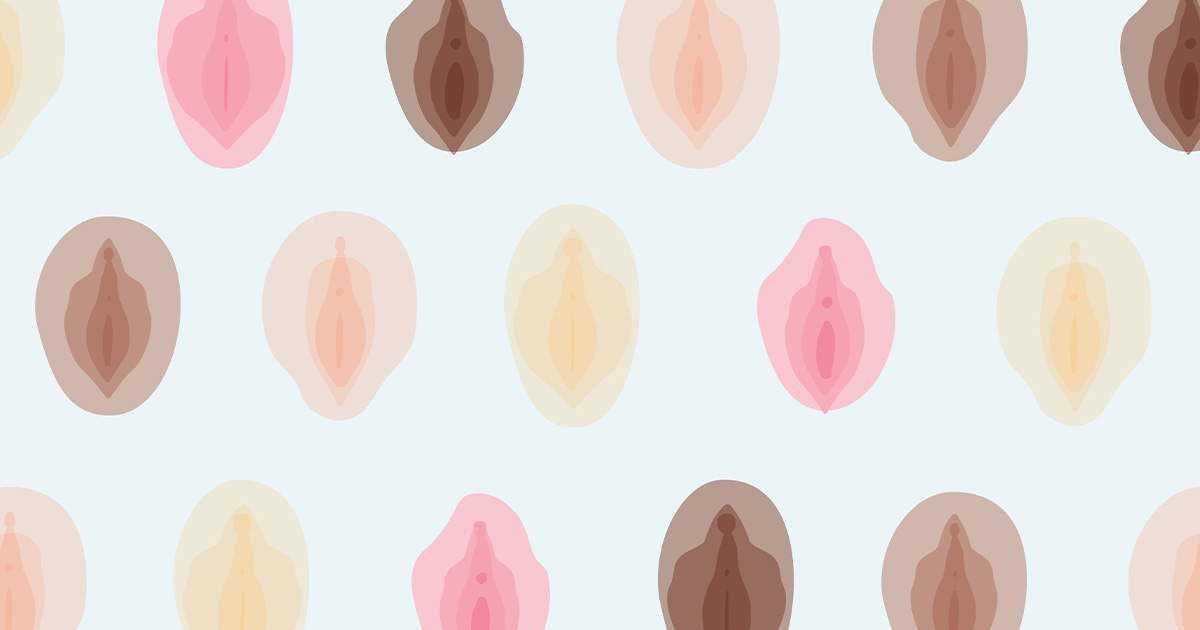
November 10, 2025
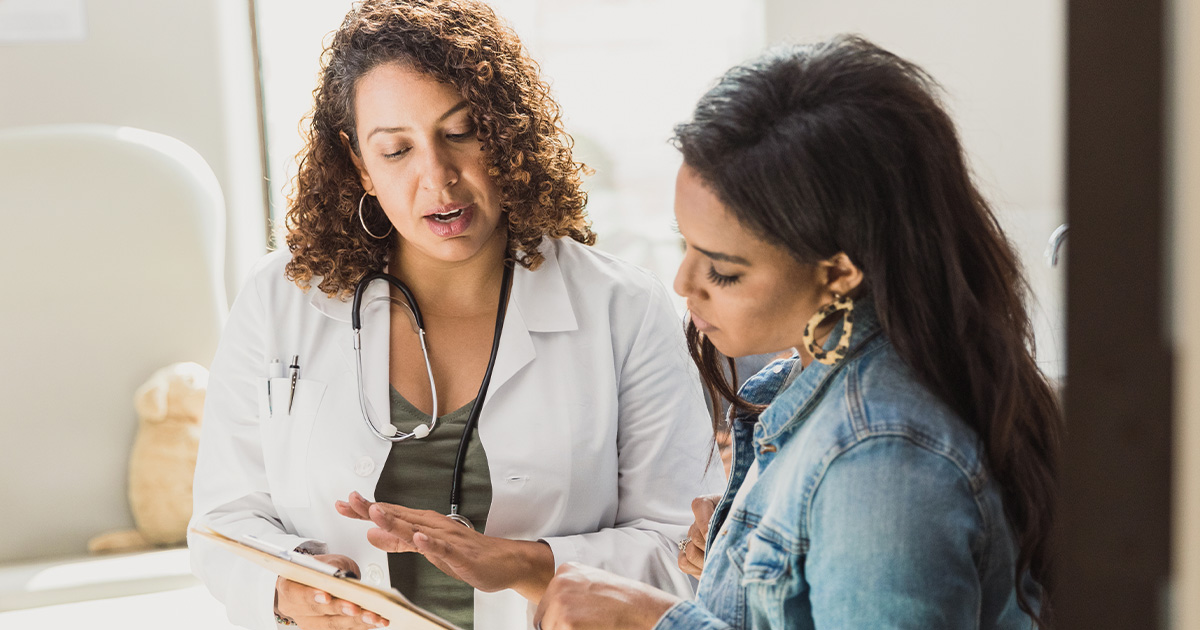
September 15, 2025
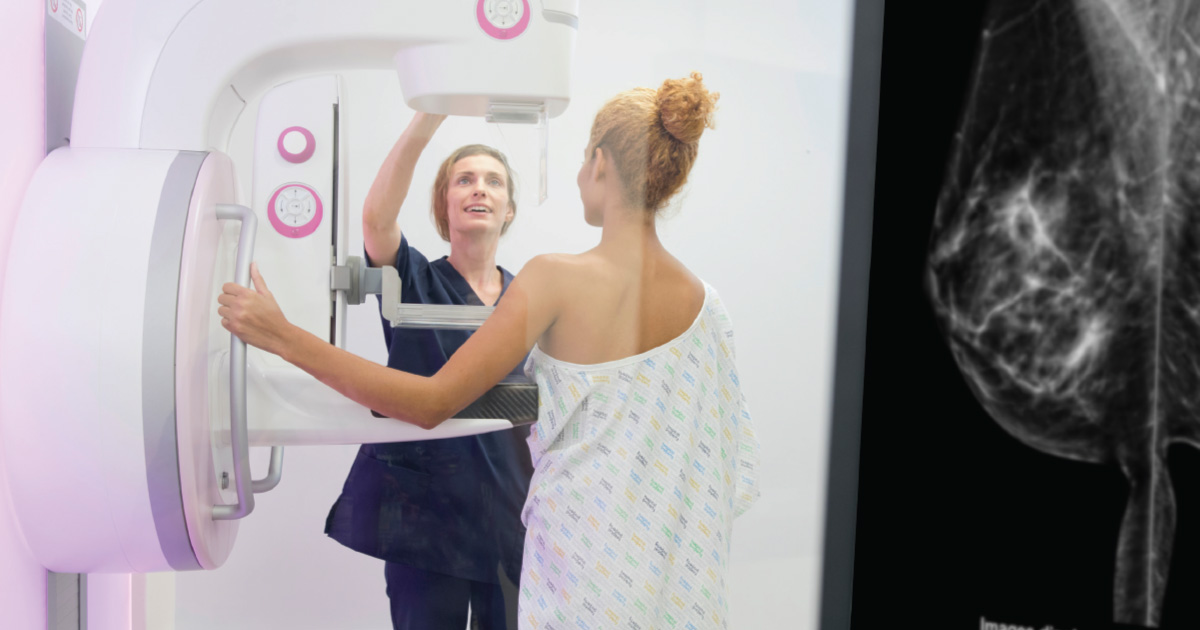
September 15, 2025

September 15, 2025
A Study about Mom’s Wellbeing & Maternal Attitudes
Read More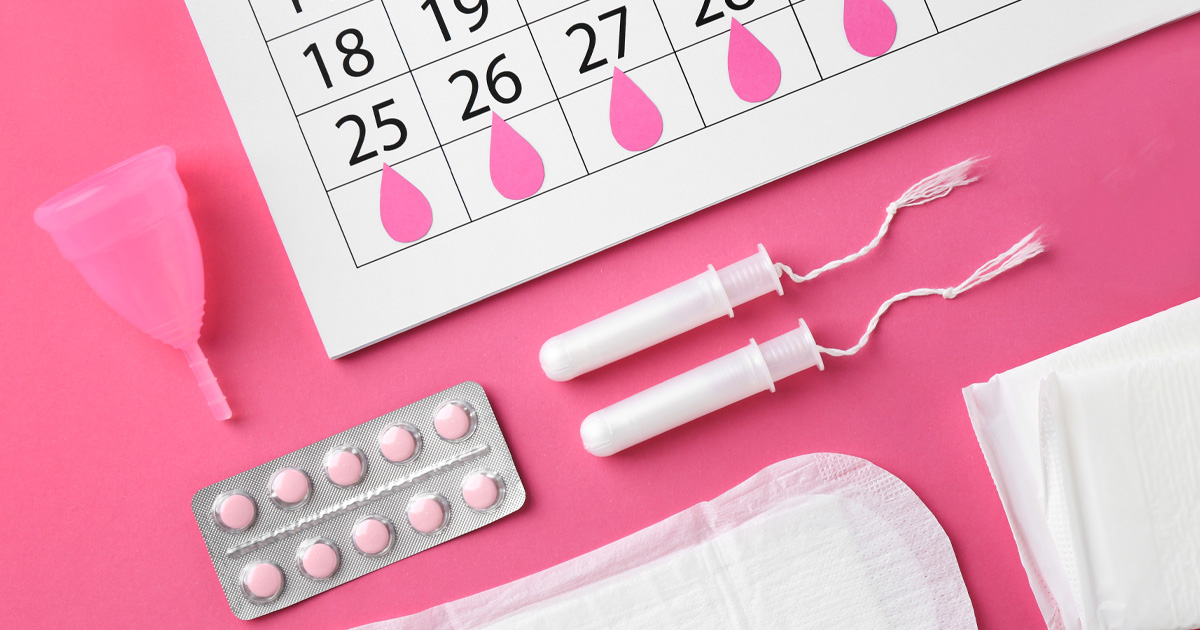
August 12, 2025

May 7, 2025
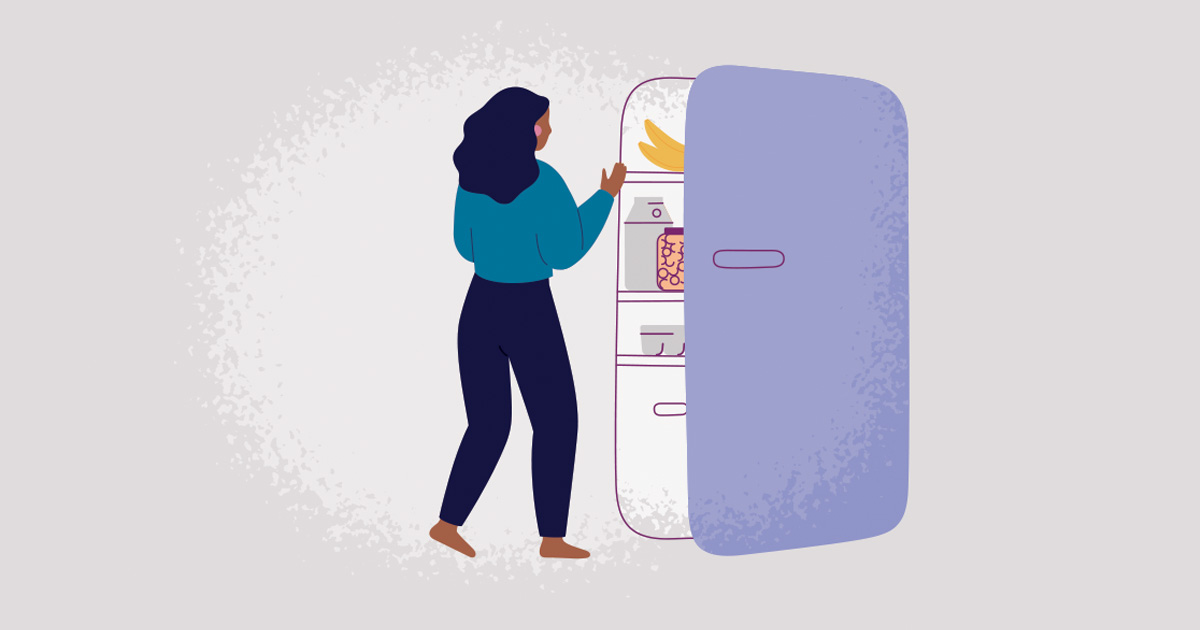
April 7, 2025

April 7, 2025

March 10, 2025

March 10, 2025

February 5, 2025

February 5, 2025

February 4, 2025

January 7, 2025

January 7, 2025

November 13, 2024

November 13, 2024
What’s That Bump? A Guide To Decoding Below-The-Belt Bumps
Self-care, What's Up, Down There
Read More
October 8, 2024

October 8, 2024

August 22, 2024

August 22, 2024

July 24, 2024

July 24, 2024

June 24, 2024

June 24, 2024

May 24, 2024

May 24, 2024

April 23, 2024

March 21, 2024

February 20, 2024

February 20, 2024
When Your Period Isn’t Going With The Flow: What’s Normal, What’s Not
What's Up, Down There
Read More
January 22, 2024

January 22, 2024

November 21, 2023

November 21, 2023

November 14, 2023
Changing Your Quality of Life: Tara’s Story of Overcoming Urinary Incontinence
Bladder & Pelvic Health
Read More
October 23, 2023

October 23, 2023

October 23, 2023

September 19, 2023

September 19, 2023

August 21, 2023

August 21, 2023

July 21, 2023
Everything You’ve Wanted To Know About Your Uterus
Patient Resources, What's Up, Down There
Read More
July 21, 2023

June 22, 2023

June 21, 2023

May 22, 2023

May 22, 2023

April 19, 2023

April 19, 2023

April 19, 2023

March 21, 2023

March 21, 2023

March 21, 2023

February 17, 2023

February 15, 2023

February 14, 2023

January 18, 2023

January 3, 2023
What You Need to Know About Birth Defect Prevention: A Candid Consult
Pregnancy, Preventive Care
Read More
January 1, 2023

December 16, 2022

December 16, 2022

December 15, 2022

December 14, 2022

November 14, 2022

November 13, 2022

October 19, 2022

October 19, 2022

October 19, 2022

October 3, 2022

September 20, 2022

September 20, 2022

September 20, 2022
Polycystic Ovarian Syndrome (PCOS): What You Need to Know
Bladder & Pelvic Health, Gynecology
Read More
August 16, 2022

August 15, 2022

August 15, 2022

August 15, 2022

July 20, 2022

July 20, 2022

July 20, 2022

July 20, 2022

July 14, 2022

June 21, 2022

June 21, 2022

June 21, 2022

May 20, 2022

May 20, 2022

May 3, 2022

April 18, 2022
What’s Up, Down There: Why Do We Get Pain Back There During Our Period?
Gynecology, What's Up, Down There
Read More
April 18, 2022

March 18, 2022

March 16, 2022

March 15, 2022
What’s Up, Down There: Understanding Your Menstrual Cycle
Gynecology, What's Up, Down There
Read More
March 15, 2022

March 15, 2022

February 14, 2022

February 11, 2022

February 11, 2022

February 11, 2022

January 12, 2022

January 12, 2022
What’s Up, Down There: Everything You’ve Wanted to Know About Pubic Hair
Gynecology, What's Up, Down There
Read More
January 1, 2022

December 14, 2021

December 14, 2021

November 8, 2021
The COVID-19 Vaccine & Changes in Your Period: A Conversation with Axia’s Chief Medical Officer
COVID-19, Gynecology
Read More
November 8, 2021

November 8, 2021

November 8, 2021

October 18, 2021

October 18, 2021

October 18, 2021

September 24, 2021

September 20, 2021

September 20, 2021
I’ve Developed Gestational Diabetes. Now What?
Exercise & Nutrition, Fourth Trimester, Pregnancy
Read More
September 10, 2021

August 13, 2021
How Hormones Affect Digestion From Pregnancy to Menopause
Menopause, Pregnancy, Preventive Care
Read More
August 13, 2021

August 13, 2021

August 13, 2021

July 14, 2021

July 14, 2021

July 14, 2021

July 14, 2021

June 11, 2021
Pelvic Floor Physical Therapy: Why Kegel Exercises Aren’t Everything
Bladder & Pelvic Health
Read More
June 11, 2021

June 7, 2021

June 2, 2021

May 17, 2021

May 17, 2021

April 30, 2021

April 13, 2021

April 9, 2021

April 9, 2021
Top 10 STD Questions You May Be Too Embarrassed To Ask Your Doctor
Gynecology, Preventive Care
Read More
March 16, 2021

March 16, 2021

February 19, 2021

February 19, 2021

January 22, 2021
Candid Consult: Discussing Race in Healthcare
Read More
January 22, 2021

January 19, 2021
What You Should Know About Cervical Cancer: A Candid Consult with Dr. McDonald
Bladder & Pelvic Health, Cancer
Read More
December 17, 2020

December 17, 2020

December 17, 2020

November 23, 2020

November 23, 2020

October 27, 2020

October 27, 2020

October 1, 2020
Your Breastfeeding Journey Series: How to Care for Your Breast Pump and Accessories
Fourth Trimester
Read More
September 24, 2020

September 1, 2020

September 1, 2020

August 25, 2020

August 24, 2020

August 3, 2020

July 28, 2020

July 23, 2020

June 22, 2020

June 22, 2020

May 21, 2020

May 20, 2020

April 27, 2020

March 11, 2020

February 20, 2020

January 21, 2020

December 10, 2019

November 17, 2019

November 15, 2019

October 4, 2019

September 17, 2019

September 9, 2019

July 22, 2019

July 15, 2019

July 11, 2019

June 24, 2019

June 10, 2019

May 12, 2019

May 11, 2019

May 10, 2019

May 10, 2019

May 10, 2019

May 9, 2019

May 8, 2019
Post-Partum Depression: Moving Out of the Shadows into a Community of Support
Fourth Trimester, Mental Health
Read More
April 3, 2019

March 5, 2019

